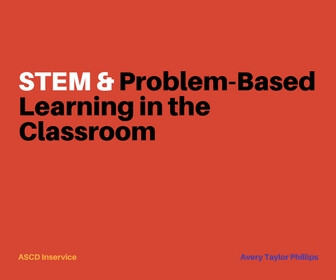New research on the online education resource marketplace, TeachersPayTeachers.com (TpT), suggests that many teachers struggle with gaps in curriculum resources and need more support from their schools and districts.
Founded in 2006, TpT allows teachers to share curricular resources with other educators—sometimes for free, and sometimes for a price. To better understand educators’ varying relationships to this platform, researchers at Elon University and the University of Northern Arizona conducted a survey of more than 1,300 educators from around the world—all of whom use the service—aiming to understand why and how it supports their curricular needs.
Perhaps the biggest takeaway from the resulting report is that most educators have a strong baseline need for more teaching materials, and TpT has become a popular vehicle to provide them.
“There's something about TpT that teachers find easy and trusted and useful, whether that's objectively true, that’s still kind of an open question,” said Catharyn Shelton, a professor of education technology at the University of Northern Arizona, and one of the study’s co-authors. “Teachers are seeing something here that is supplementing for them and filling holes.”
Hearing From Teachers Directly
The research team developed the survey to assess both the frequency with which teachers used the service and the most common reasons why. After drafting a series of questions, they received feedback from several academics familiar with TpT, but unaffiliated with the study. Then, Shelton, along with study co-author and professor of education at Elon University, Jeffrey Carpenter, distributed the survey over Twitter, Facebook, and Instagram, receiving 1,359 responses over a six-week period. The researchers acknowledge that this sample is not meant to represent all TpT users or all teachers. There is no guarantee, for example, that educators using the site would be active on social media and would overlap with the researchers’ online community.
Most of the survey respondents (78 percent) used TpT frequently—at least once a month or more. Additionally, almost three quarters of them had only ever spent their own money to purchase curricular materials—without financial help from their schools or districts. Participants estimated that just under half of the content they accessed on the site was free.
As for why these educators used the service, the most common response was to help students with concepts and skills that were insufficiently addressed in existing curriculum materials provided to them by their school or district. Sixty-one percent of respondents said this was always or many times the reason for acquiring curricular resources on the site. According to Carpenter, what teachers mean by “insufficient curriculum materials” varies.
“We did have folks who said, ‘I have no curriculum. My state, my district, or my school gives me nothing,” said Carpenter. But, he explained, other respondents said, “’I have some curriculum, but my state just adopted Common Core or some variant of that, and so some of the curriculum is just kind of off.’”
Carpenter also noted that some teachers reported that they did not actually have a dire need for more curricular content, but wanted to access materials that were more engaging or fun for students than what they already had.
Of course, this was a self-reported survey, which complicates the way the researchers can interpret these data. As Carpenter and Shelton both acknowledge, their findings provide a picture for how teachers feel about the curricular materials they have access to. But that doesn’t necessarily mean that those feelings are an accurate reflection of what resources schools and districts actually provide.
“Some of these perceptions may be real, because that's what teachers feel and think, but they may not be entirely accurate in terms of what their district may have access to and just have not advertised well enough to the teachers,” said Carpenter.
Lingering Questions Around TpT
Although the survey clearly articulates the way in which TpT fulfills a very real curricular need for teachers, the service has received plenty of criticism generally. Purchasing content from other teachers in other states and countries has raised serious questions about copyright infringement of curricular content and potential challenges in maintaining cohesive instruction throughout the school year. Previous research has also demonstrated that the quality of content on the site varies quite a bit, and a large portion of it may not, in fact, support learning the concepts and skills it purports to.
Some educators have also expressed concerns with what Carpenter and Shelton call the “neoliberal logic” of the site. As demonstrated in the report, not all teachers find a marketplace to be an appropriate setting for professional exchange and some have criticized the fact that venders can profit from selling curriculum that may not be vetted or created by someone with expertise on the subject.
“I think a lot of teachers are in the boat of ‘This is a bad symptom of a corrupt system, let's not be a part of it,’” said Shelton.
However, according to the researchers, only 28 of the survey respondents, a small minority, expressed opposition to the logic of the site itself. Much more common critiques of the platform, according to the study, focused on material that didn’t fit educators’ particular contexts, or general quality concerns.
Overall the report raises questions about the level of curricular support teachers are getting from their schools and districts. School systems should ideally be able to provide the curricular content teachers need and create greater coherence and alignment in classrooms. But previous research has found that many educators report needing significantly stronger guidance on curriculum from leaders and administrators. If districts provided stronger curricular support—along with sufficient time and training for educators to create their own resources when appropriate—demand for sites like TpT might dissipate, Shelton and Carpenter state. But in the meantime, as teachers face major demands for instructional materials, sites like TpT are offering them help—or at least, it feels that way.
“Teachers are seeing something here that is filling holes, whether that's true or not, objectively, it might not matter,” said Shelton.








